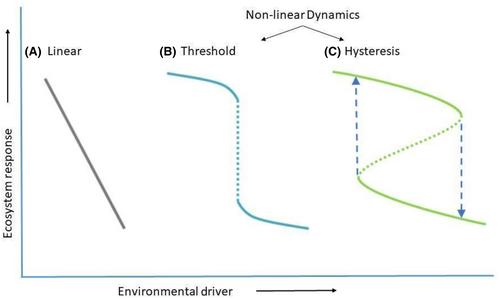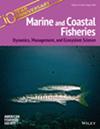To support the movement in marine fisheries management toward ecosystem-based fisheries management by exploring ecosystem-level reference points (ELRPs) as an option for managing fisheries at the ecosystem level. An ELRP is an ecosystem harvest level or indicator with one or more associated benchmarks or thresholds (i.e., targets, limits) to identify, monitor, or maintain desirable ecosystem conditions and functions.
This paper explores the development and implementation of ELRPs in fisheries management to support ecosystem and fisheries sustainability, help identify when ecosystem changes that impact fisheries resources occur, and foster discussions of trade-offs in management decisions.
We organize existing and potential ELRPs into five categories (statistical analysis of nonlinear dynamics and tipping points, ecosystem productivity, ecosystem trophic information, biodiversity, and human dimensions), provide an overview of analytical methods that can estimate ELRP benchmarks, provide examples of where ELRP benchmarks are being used today, and evaluate pros and cons of the different ELRP categories. We also attempt to identify potential next steps for fisheries scientists and managers to further the science, development, and application of ELRPs.
Ecosystem-level reference points can be used as a proactive accountability mechanism to achieve ecosystem objectives and maintain the ecosystem in a preferred operating space or as an early warning that ecosystem-level changes (e.g., tipping points) could be imminent if current biological and ecological trends in the system continue.



